What Did You Think of Yesterday Desribe Islamic Art
1.one Stained glass windows of Nasīr al-Mulk Mosque in Shiraz, Iran –1001inventions.com/nasiralmulkmosque
From Ibn Al-Haytam'south optical lenses and Ibn Hayyan'south chemistry flasks to a mosque lamp of Amir Qawsun, Muslim Civilisation played a major role in inspiring the growth of glass industry from the 8th century onwards.
Mosques, houses and cities were transformed into cute spaces richly decorated with glass. Dazzler and functionality were both essential elements of pattern in Muslim Civilization. Perchance in an effort to supply the thousands of mosques, and also cheers to the input provided by the thriving scientific activity in fields such as optics and chemical science, glassmakers in Muslim Culture turned – what had up till and then been – a craft into an industry employing new techniques and large number of workers from unlike parts of the Muslim Civilisation.
 | Under Islam, the glass industry witnessed a revival. The old centres flourished and new ones were established. The remarkable, sumptuous Islamic glass treasures which are distributed among museums throughout the world, bear witness to the high artistic and technological level of Islamic glass." |
*Al-Hassan, A. Y. "Scientific discipline and Engineering in Islam: Technology and practical sciences" UNESCO, 2001; Page 74.
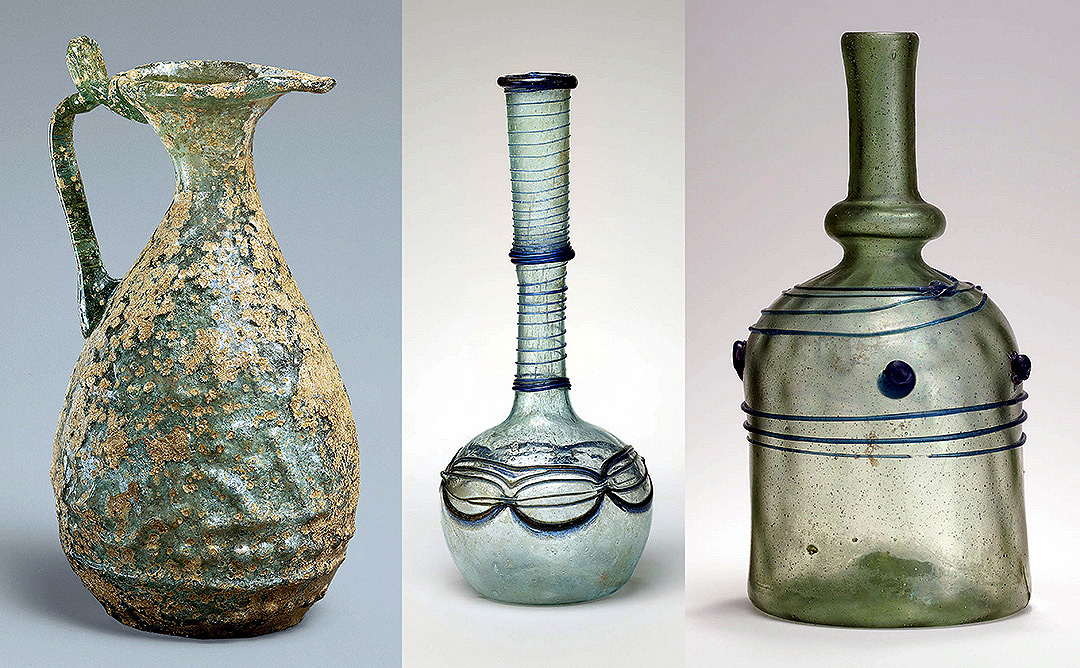
Vast Production
Throughout the Muslim Culture glassware was produced in vast amounts from the 8th century either by blowing liquid drinking glass into holds or past cut it from crystal. Glassmakers in Syria and Egypt inherited the Roman drinking glass industry and improved information technology by developing their own technique perfecting glass decoration and colouring, and expanding the variety of products.
 | Muslim and non-Muslim glassmakers working in the Islamic areas, withal, were extraordinarily creative and, in tune with the full general development of Islamic art, brought this craft to a new technical, technological, and artistic heights ." |
*Meri, J. W. "Medieval Islamic Culture: An Encyclopedia"; Routledge, 31 Oct 2005; Folio 297.
Digging work in Syria and other parts of the Muslim Civilisation uncovered a huge corporeality of glassware. Aleppo in Syria was mentioned every bit a glassmaking and decorating heart by the geographers Yaqut Al-Hamwi (d. 1229) and Al-Qazwini (d. 1283). Damascus, too, was described as a glassmaking centre by Ibn Battuta (d. 1377). Arab republic of egypt, Iraq and Andalusia were besides all producing glass in vast quantities.
Drinking glass from the Muslim Civilization, and peculiarly that from Syria, was highly prized the world over. Drinking glass objects were discovered in medieval European sites in Sweden, and Souther Russia. Even such fragile objects equally Syrian enamelled drinking glass of the 13th century take been found in Sweden.
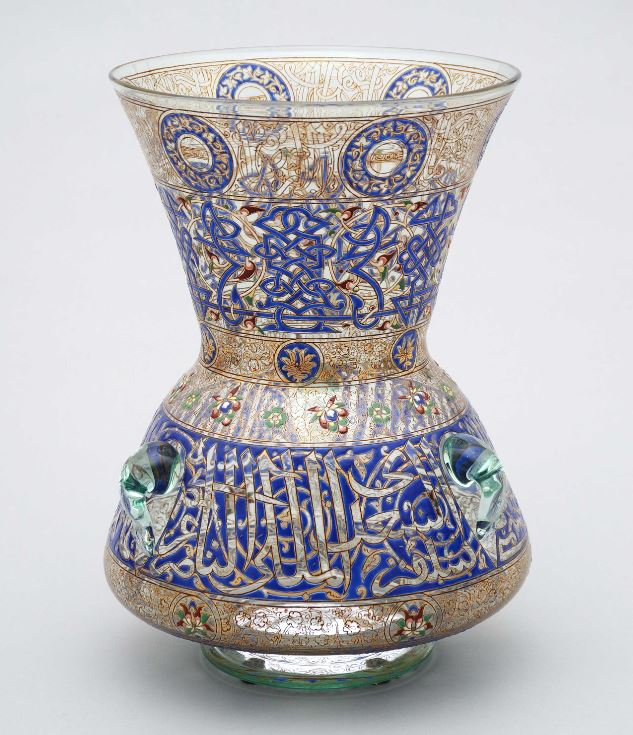
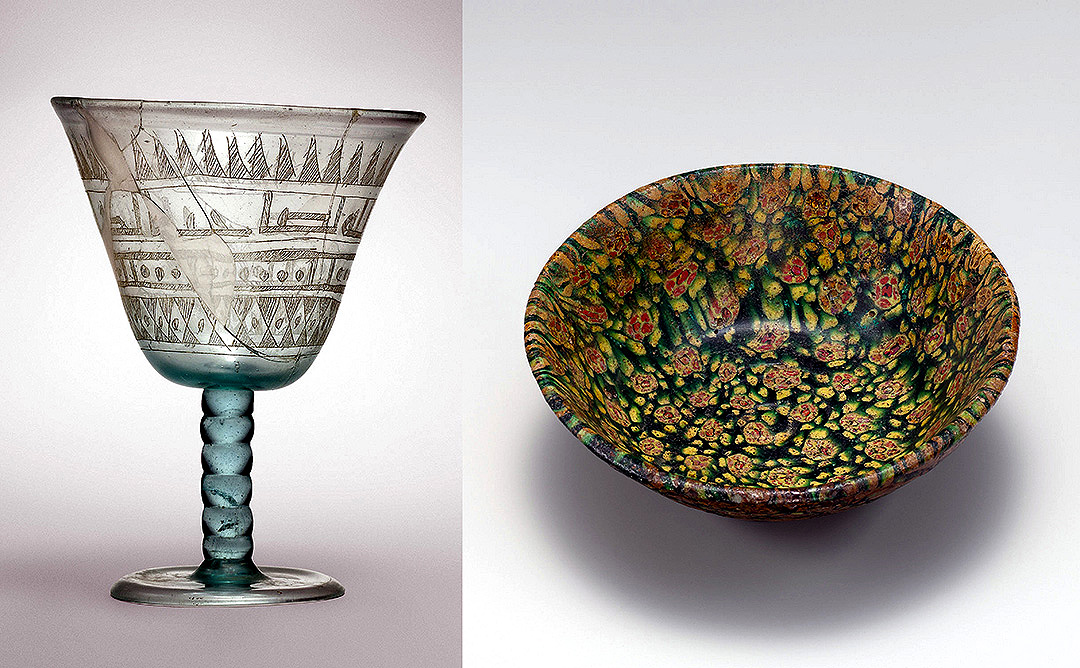
Supporting Scientific Endeavours
 | Modernistic chemistry grew, in some measure out, out of Islamic alchemy…. There was a great bargain of practical experimenting washed in the making of glass, leather, and cloth, the working of metals, and in the training of drugs.. ." |
*F.B. Artz: The Mind; op cit; pp. 165-seven.
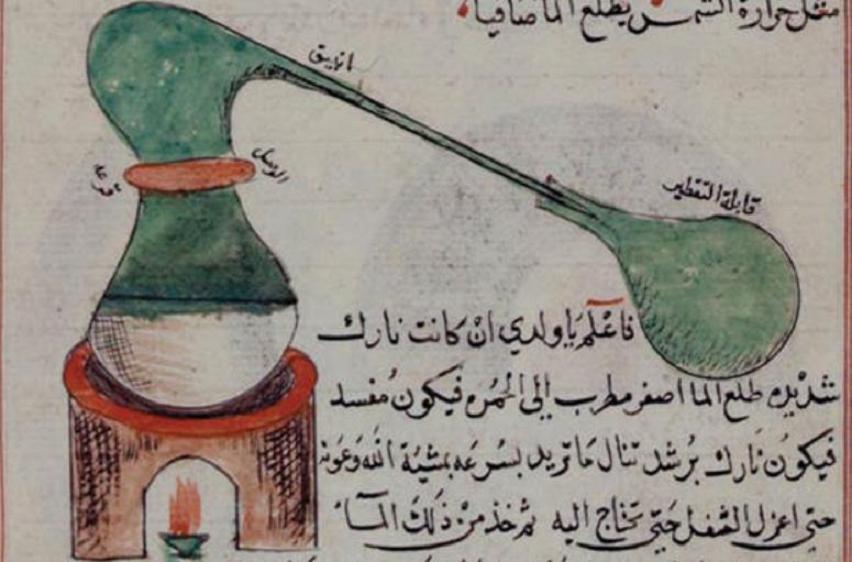
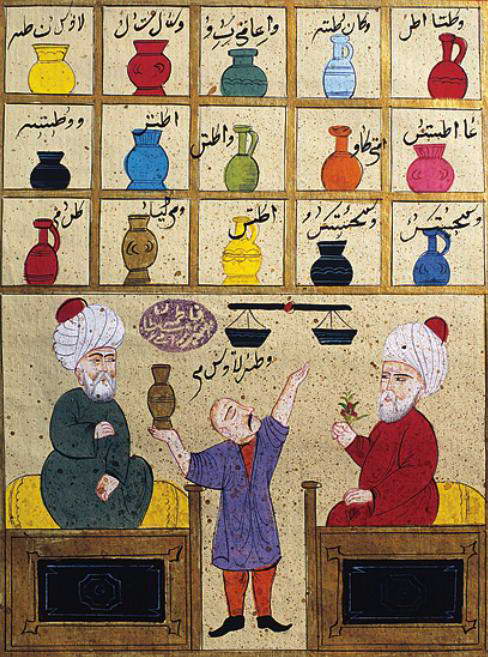
In the early 14th century, more than 300 years after Ibn Sahl, Maragha astronomer-mathematician Kamal al-Din al-Farisi experimented with a glass sphere filled with water to clarify the way sunlight breaks into the spectrum colors of a rainbow. The rays that produced the colours of the rainbow, he observed:
 | … were refracted upon entering his glass sphere, underwent a full internal reflection at the back surface of the glass sphere (which sent them back toward the observer), and experienced a 2nd refraction as they exited the sphere. This occurred in each droplet within a mist to produce a rainbow ." |
*R. Rashed, "Kamal al-Din"; C.B. Boyer, The Rainbow: From Myth to Mathematics,
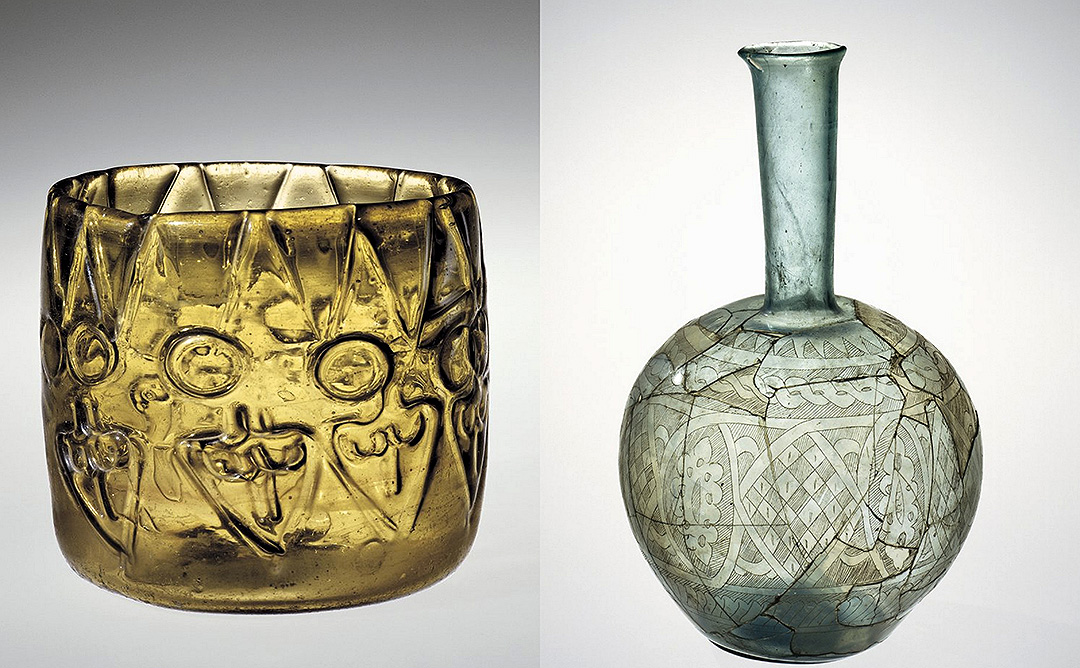
 | Al-Jazari's treatise includes water and irrigation devices, machines where robot girls place a drinking glass in the ruler's mitt, mechanical flutes, decorative items such equally a monumental door with one of the earliest descriptions of green-sand casting ." |
*Al-Djazairi, S.E.. The Golden Age and Turn down of Islamic Culture, Book 2 (Kindle Locations 2759-2760). MSBN Books. Kindle Edition.
The technique of cutting crystal was said to have been introduced by 'Abbas ibn Firnas (d. 887), scholar and inventor in the courts of 'Abd al-Raḥman 2 and Muḥammad I. It is worth pointing hither to the genius of Ibn Firnas, who was not only able to decipher the most circuitous writing, merely also made attempts at flying by building artificial wings. In relation to glass, he was familiar with the scientific properties of glass, and contributed to the early experiment with lenses and the idea of magnifying script past their use. He also lent his skills to the glass making furnaces of Cordoba, and made a representation of the sky in drinking glass, which he was able at will to make clear or cloudy, with lightning and the noise of thunder at the press of a finger.
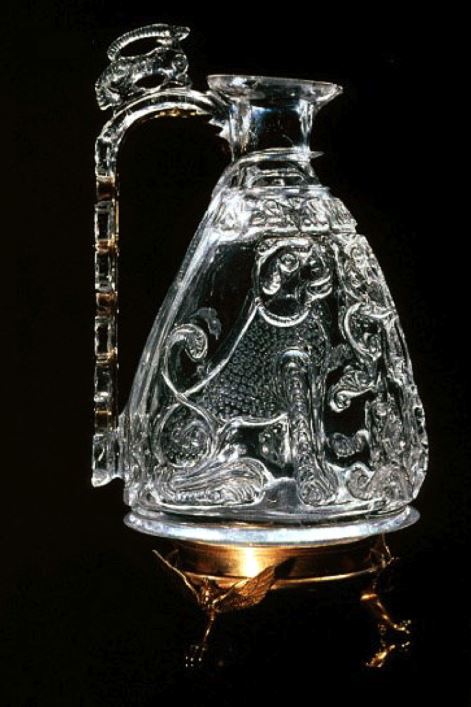
Decorative Art
"The ascension of Islam, and the resulting expansion of Muslim territories through the seventh century A.D., ultimately gave rising to a society that kept live many of the achievements that were lost in the west. Mosaic drinking glass, cast and cut vessels, and gratis- and mold-blown wares continued to exist made, and starting in the ninth century, new decorative approaches emerged. The main advance began with the discovery that glass could be painted with metallic stains, resulting in a type of drinking glass known as lustre ware considering of its distinctive sheen. This was the first stained glass."*
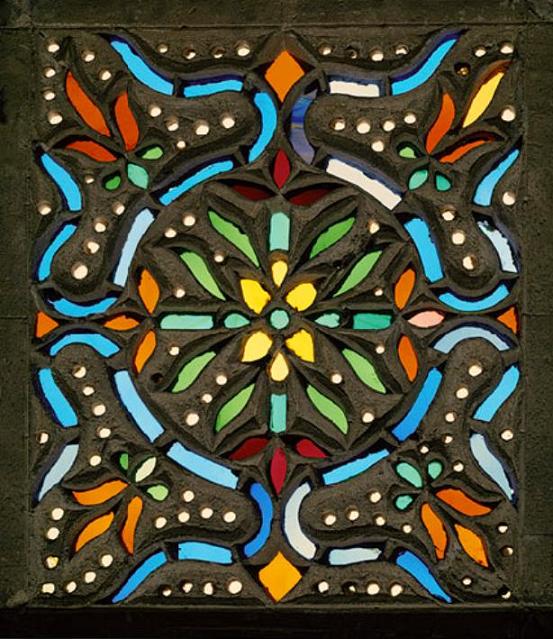
 | German art historian Otto von Simson explained the origin of the rose window by comparing the thought to the six-sided rosettes and octagon window on the outside wall of the Umayyad palace Khirbat al-Mafjar, built in the Holy Land in nigh 750 CE. The theory is that Crusaders saw such windows and brought the thought back to Europe, introducing it into churches ." |
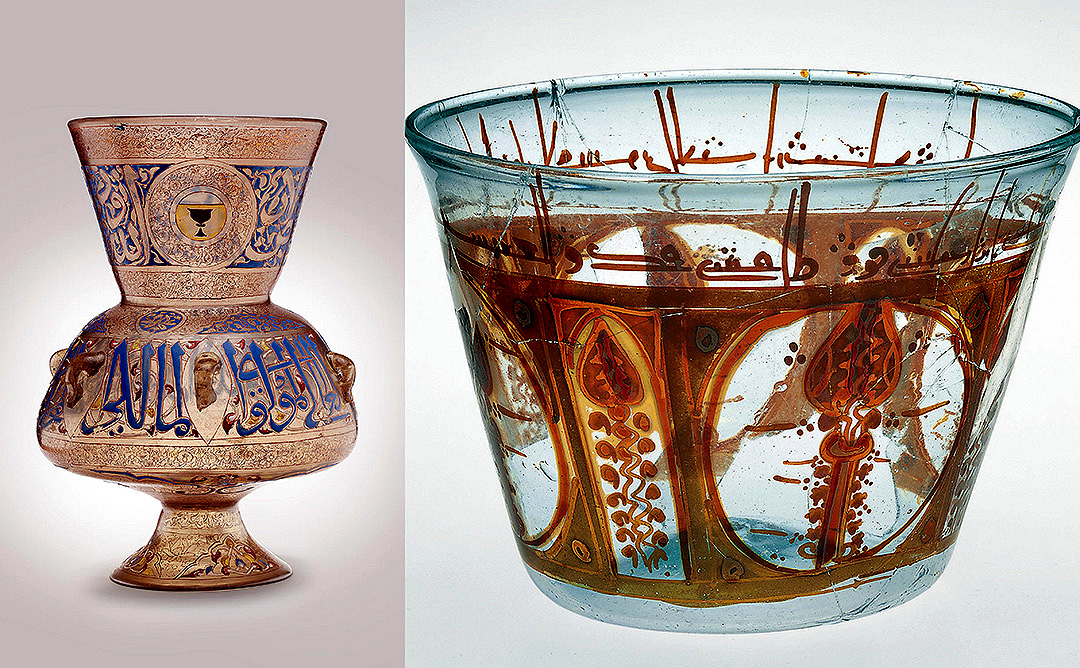
Varied Techniques
 | … The outset painters of drinking glass in the Islamic globe applied a brownish or yellow metallic pigment on bowls, dishes, and other objects. The decoration commonly consists of animal or vegetal motifs, sometimes accompanied past inscriptions. Past applying pigments to both sides of these objects, glassmakers could highlight details or exploit the transparency of the glass to produce subtle shading effects… " |
*Michael, Muneneh "An exploration into barriers to utilise of waste glass in interior spaces in Nairobi" Page 29 (PDF)
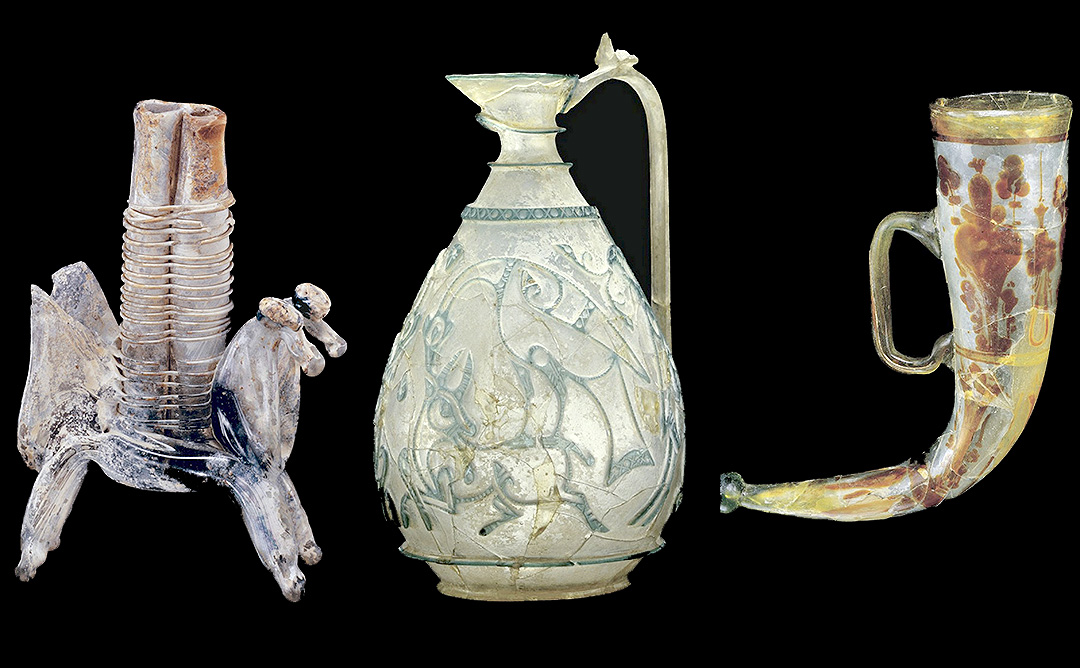
Some of the most sophisticated Egyptian glass vessels were decorated with lustre. This shiny, sometimes metallic effect was accomplished by painting copper or silver oxide on the surface of the object, which was then fired at a temperature of about 600°C (1112°F) in reducing conditions. The same technique, as already noted, was used in the decoration of earthenware, not simply in Egypt merely too in Republic of iraq and Iran. Until recently, controversy raged over the origin of lustre painting, just the problem appears to accept been solved by the discovery at Al-Fustat, of a glass loving cup of local type, inscribed with the name of 'Abd al-Hamad, governor of Egypt in 771-772; Egyptian glass painters were therefore using lustre some fourth dimension before its appearance in Iraq.
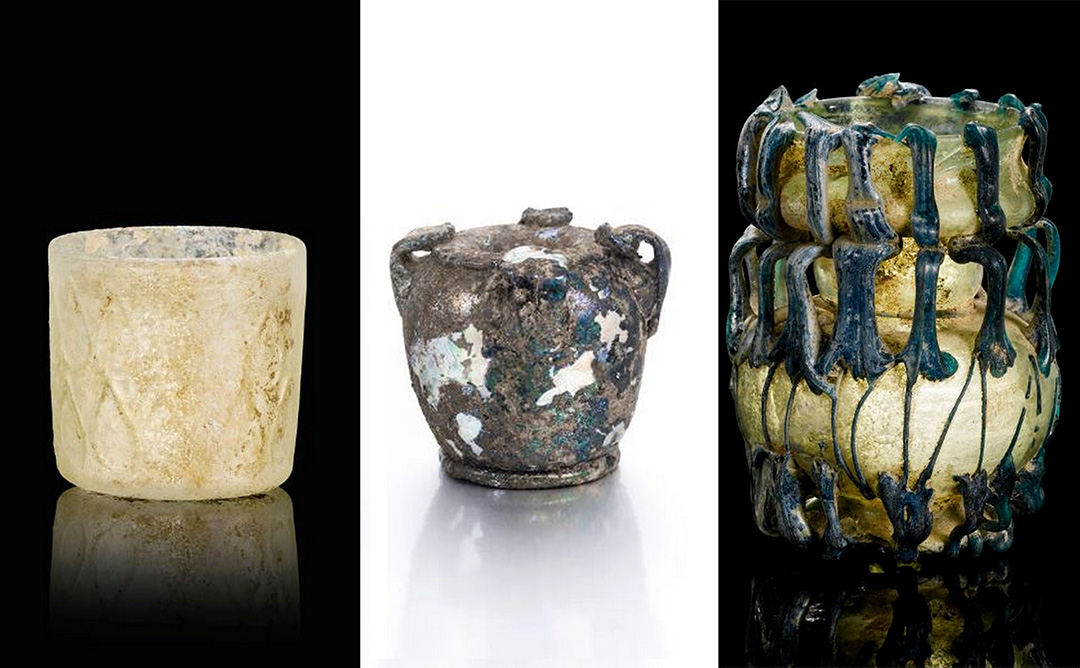
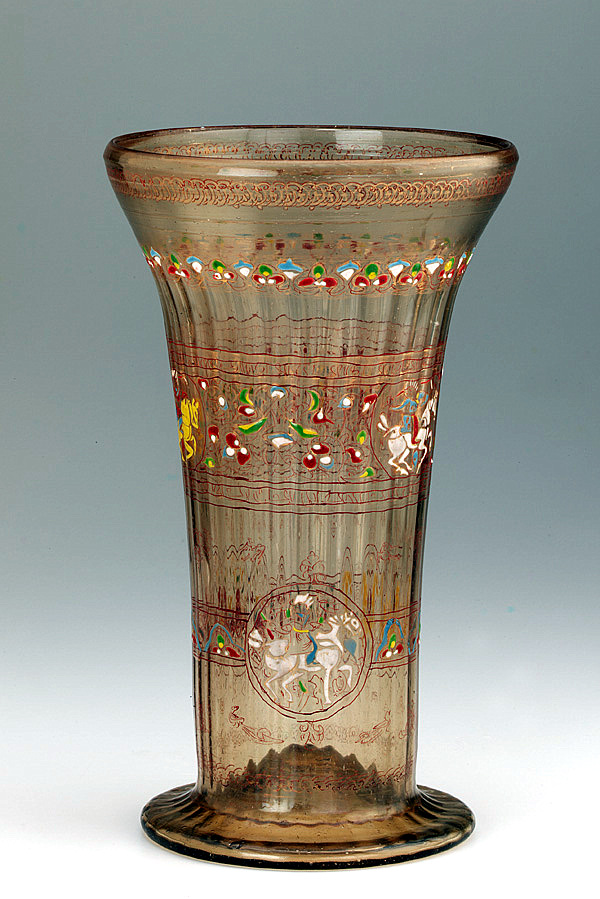
 | Contact betwixt the Byzantine Empire and the new empire of Islam immune Islamic glassmakers to add together the known Roman and Byzantine glassmaking techniques to their own glassmaking noesis. As with many chemical arts, this cumulative glassmaking noesis was then preserved by the world of Islam until the coming of the Renaissance in the West. In Islam glassmaking flowered again for a time, combining Roman knowledge with indigenous traditions.. ." |
* Rasmussen, Due south. C. "How Drinking glass Changed the World: The History and Chemistry of Drinking glass from Antiquity to the 13th Century"; Springer Scientific discipline & Business organization Media, 24 Feb 2012. Page 40
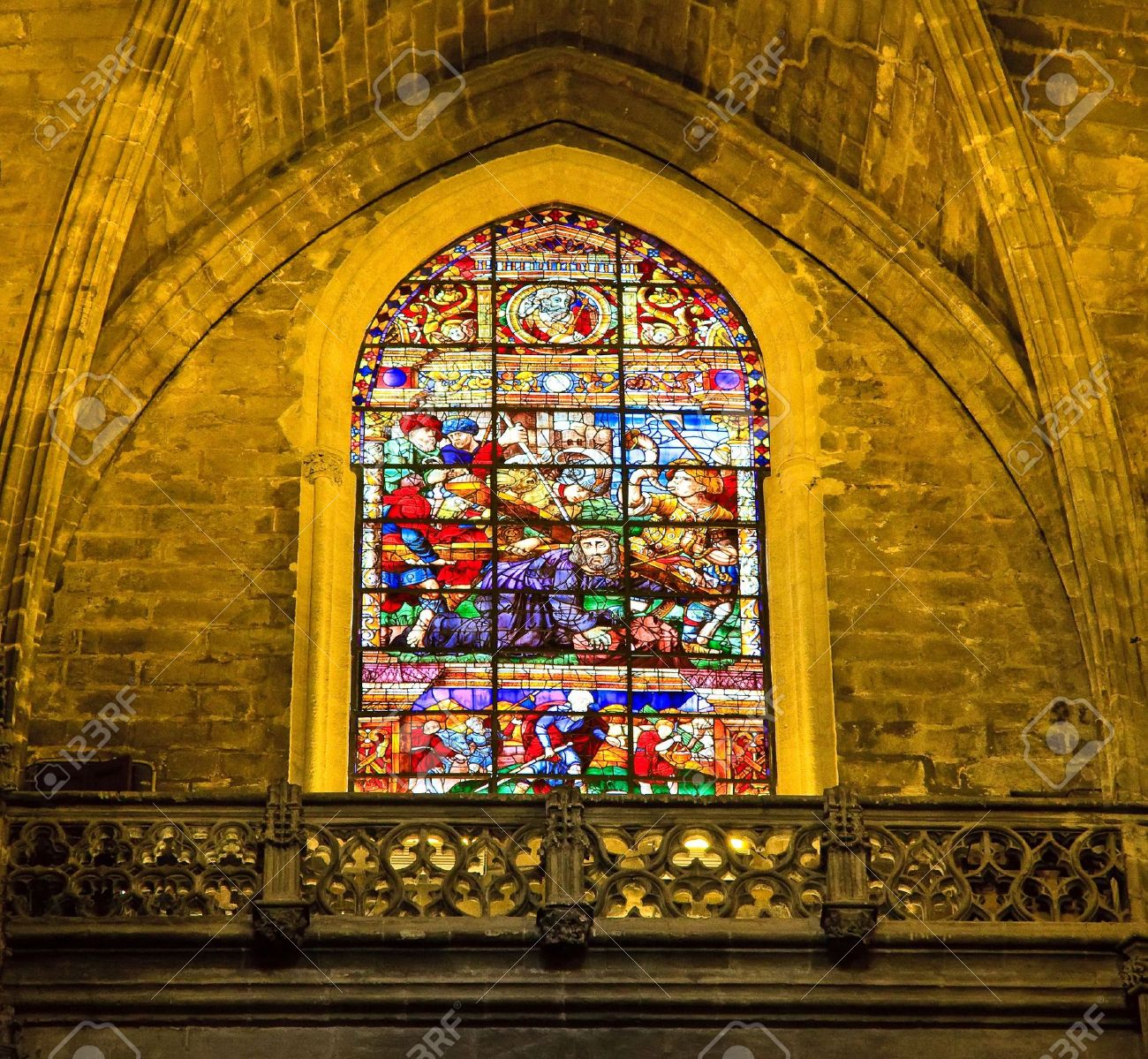
In Al-Andalus, glass vessels were blown in Almeria, Malaga, and Murcia in imitation of eastern wares, such as the irakes –glass goblets– and so favoured on the noble tables of tenth-century León. The technique of cutting crystal was said to accept been introduced by 'Abbas ibn Firnas (d. 887), scholar and inventor in the courts of 'Abd al-Raḥman Ii and Muḥammad I. It is worth pointing here to the genius of Ibn Firnas, who was not only able to decipher the nearly circuitous writing, just too made attempts at flying by building bogus wings. In relation to drinking glass, he was familiar with the scientific properties of glass, and contributed to the early experiment with lenses and the idea of magnifying script by their use. He as well lent his skills to the glass making furnaces of Cordova, and fabricated a representation of the heaven in glass, which he was able at volition to make articulate or cloudy, with lightning and the noise of thunder at the printing of a finger.
 | Even if yous put burning charcoal on its head *Huqqa: hookah, shisha, narghile, argilah (more than names) | 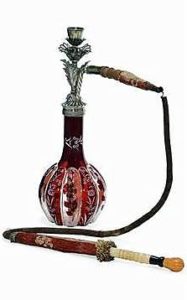 |
*[Persian verse on its base. In the verse, the huqqa obeys the rules of ladylike etiquette, remaining silent until its patron draws it out in "conversation".]
AramcoWorld.com – Gökçigdem, Elif "Fragile Dazzler: Islamic Drinking glass"
***
Read More on other industries in Muslim Civilisation
www.muslimheritage.com/article/one thousand-years-of-missing-islamic-industry
***
More Quotes and Images
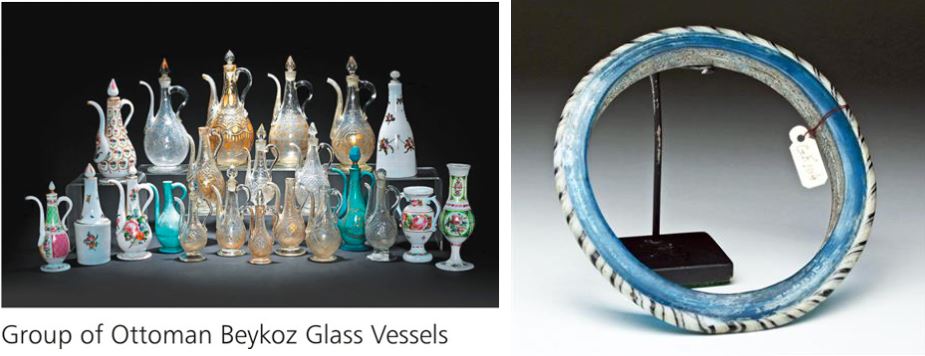
There is an excellent passage by al-Farabi (870-950), which proves that Muslims used telescopes and other sighting devices for the observation of the planets at quite an early date. His passage on the science of mechanics and other devices includes:
"The optical devices used in the production of instruments that direct the sight in order to discern the reality of the distant objects, and in the production of mirrors upon which one determines the points that opposite the rays by deflecting them or by reflection or refraction. With this, ane can likewise make up one's mind the points that reverse the dominicus's rays into other bodies, thus producing the called-for mirrors and the devices connected with them." Al-Farabi*
*Ihsa' al-Ulum; ed. O. Amin; Al-Maktaaba al-Anglo-Misriya (Cairo; 1968), pp. 108-110; in G. Saliba: The Function of Mechanical Devices in Medieval Islamic Society; in Science and Technology in Medieval Order; edited past P.O. Long; The Annals of the New York University of Sciences (New York; 1985), pp. 141-51; at pp. 145-half dozen.
Al-Djazairi, Southward.Eastward.. The Golden Age and Turn down of Islamic Civilization, Volume 1, MSBN Books.
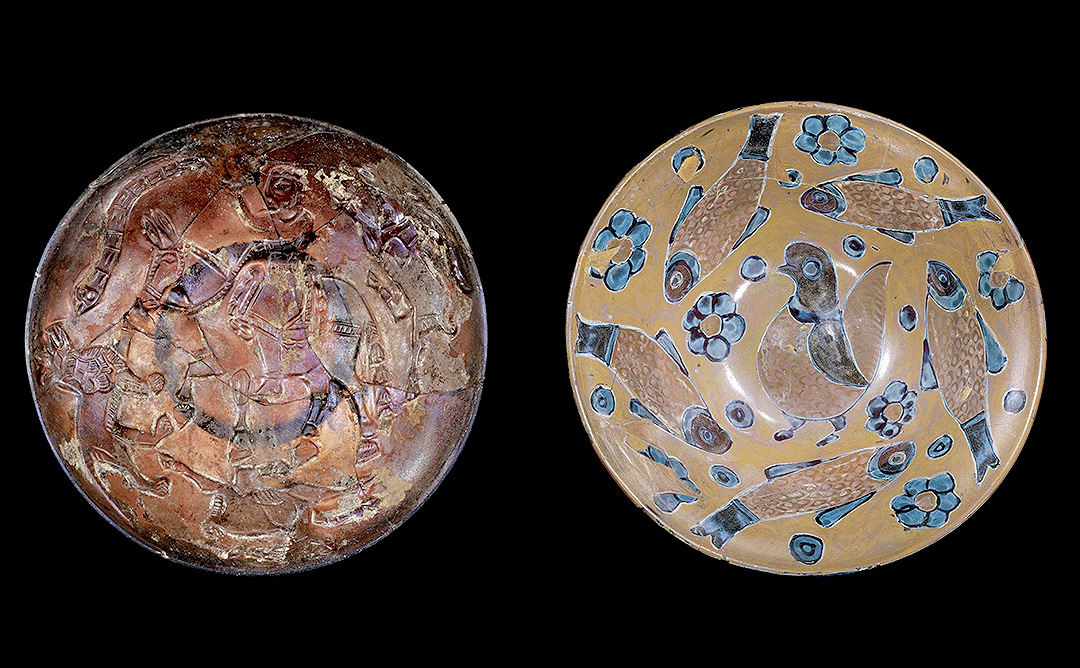
Drinking glass changed the course of the history. For example, it is said that – the inventors of gunpowder, newspaper, printing, and the compass -Chinese did not make much advances in engineering after 14th Century because they but preferred porcelain tea cup over vino glass: "The invention of drinking glass meant that nosotros likewise had the technology of lens grinding, telescopes and microscopes. The invention of spectacles meant that intellectuals and scientists had an extra fifteen-twenty years of a reading and active life. As well came the invention of beakers, flasks and retorts, which was useful because glass is chemically neutral. Between the 14th century and the 19th century, no glass was made in Communist china. Information technology also meant that they had no mirrors and their windows were made out of paper, which meant they had dark houses. So, the point is that since they liked drinking tea from the teacup, they never bothered to try to invent glass."*
*Stephan Fry, QI – Season 7 Episode iv: The Chinese, the teacup and glass
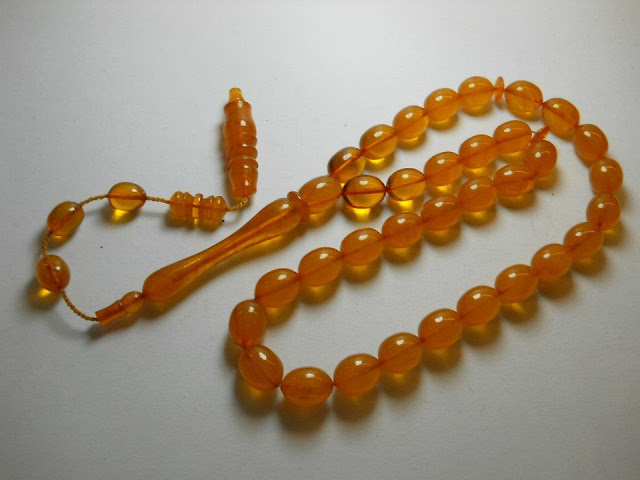
"… Also the thinness and translucence of Syrian drinking glass are proverbially famous; 1 says more delicate than Syrian glass, or clearer than Syrian drinking glass."
Al-Tha'libi (961-1038)*
*H.J. Cohen: Early Islamic Scholars as glassmakers; in A. Engle ed: Readings in Glass History; 2; (Phoenix Publications; 1973); pp. 30-5; at p. 33.
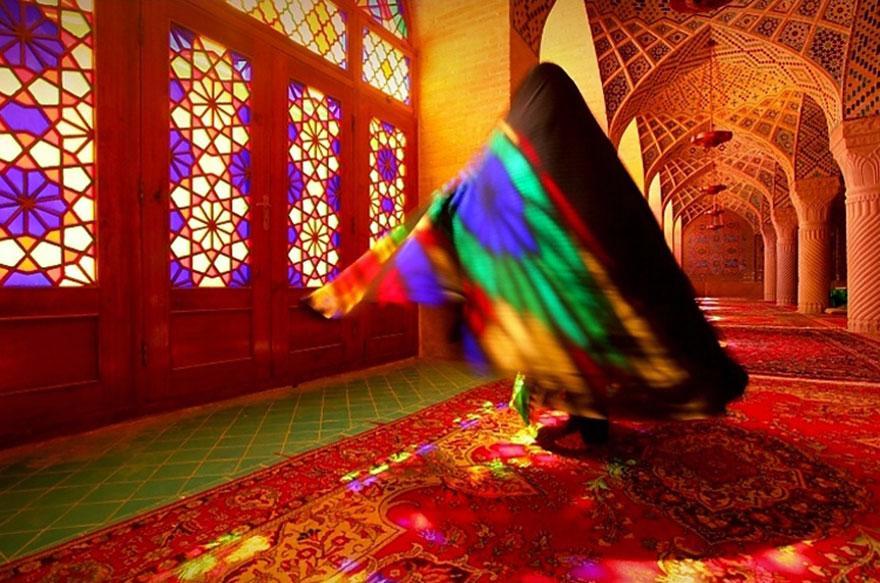
www.1001inventions.com/nasiralmulkmosque
"The designers Muhammad Hasan-e-Memar and Muhammad Reza Kashi Paz-e-Shirazi used extensively stained drinking glass on the façade and other traditional elements such as panj kāseh-i (5 concaves), which create a jiff taking effect of the interior similar continuing in a kaleidoscope. One time the sunlight hits the stained glass, the entire building is flooded by a vibrant rainbow of colours. In popular culture, the mosque is also called Pinkish Mosque, considering its tiles are beautifully decorated with a pre-eminently pinkish rose colour."
Cem Nizamoglu *
*"Mosque of Whirling Colours: A Mixture of Compages and Art in Nasīr al-Mulk Mosque in Shiraz, Iran" past Cem Nizamoglu
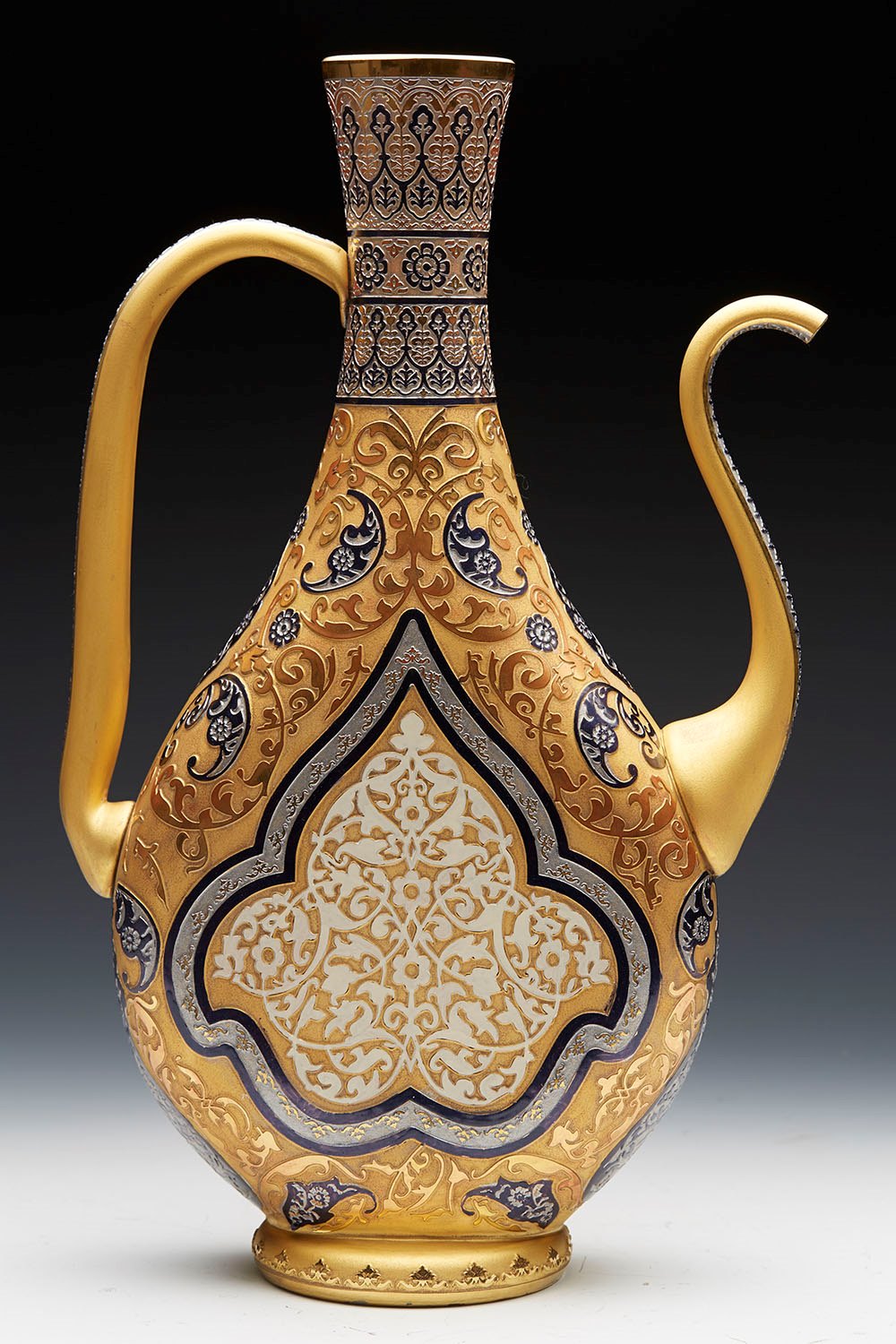
"… Egyptian and Syrian glass and metal-work, also as many of the products of Mesopotamia and Moorish Espana, were highly prized every bit being manifestly superior to annihilation that could exist made in western Europe. Information technology was largely by imitation and, in the end, sometimes past comeback of the techniques and models that had come from or through the Near East, that the products of the West ultimately rose to excellence…"
C. Vocalist *
*C. Singer et al edition: A History of Technology; vol 2; op cit. pp. 754-vi.
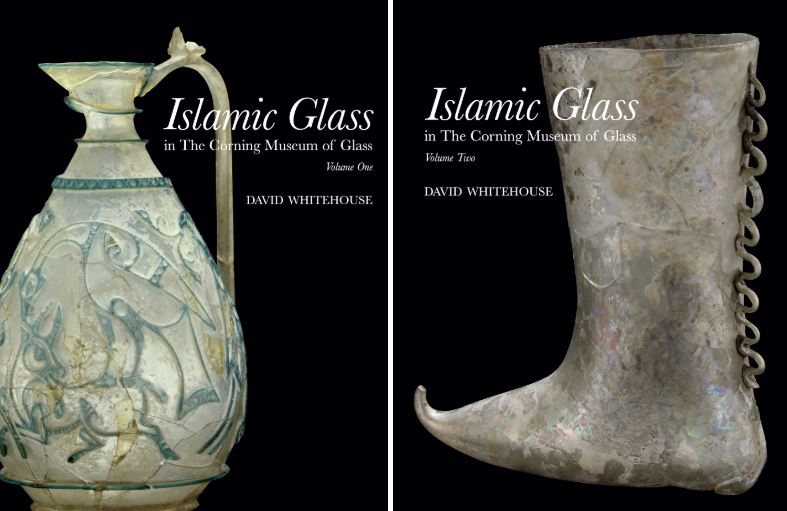
"Ibn al-Haytham's treatise On the Burning Glass exhibits 'a profound and accurate conception of the nature of focussing, magnifying, and inversion of the prototype, and of formation of rings and colours by experiments.' In his treatise 'The Shape of the Eclypse,' he tries to explicate the crescent image cast by the partially eclipsed sun through a small round aperture. Ibn al-Haytham besides wrote on the rainbow, the halo, and spherical and parabolic mirrors, and fixed the top of the atmosphere at the equivalent of about 10 English language miles."
Al-Djazairi, S.Due east.*
*Al-Djazairi, S.Eastward. The Gold Age and Decline of Islamic Civilisation, Volume 2 (Kindle Locations 6559-6564). MSBN Books. Kindle Edition.
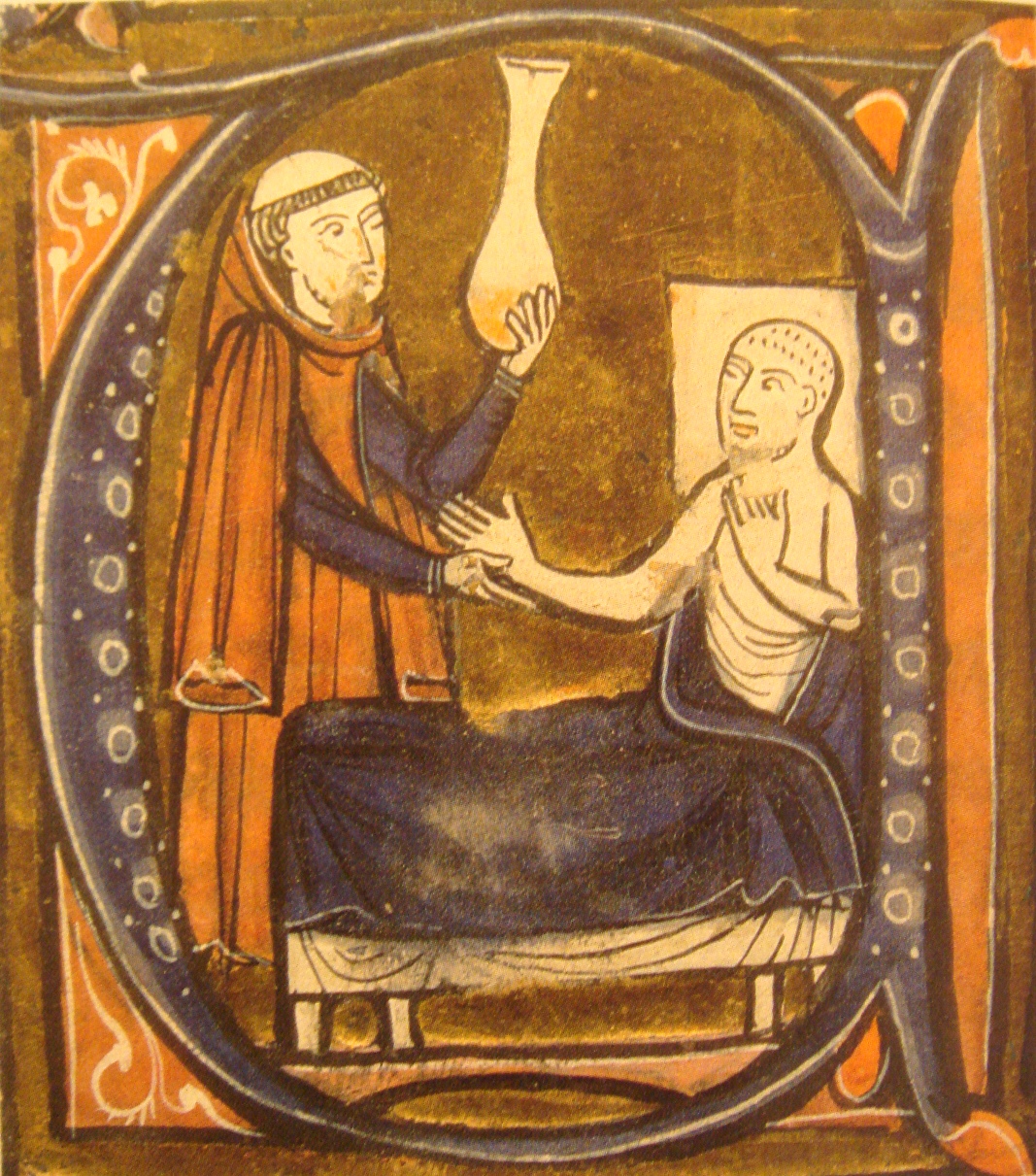
"Abu al-Qasim al-Zahrawi (Abulcasis in Latin), a 10th-century surgeon in Córdoba, composed Al-Tasrif, a 30-chapter medical encyclopedia describing dozens of operations, complete with graphic illustrations of surgical instruments, including scalpels, cauterizing tools, feeding tubes and cupping spectacles."
Ibrahim Shaikh*
*"Abu al-Qasim Al-Zahrawi the Dandy Surgeon" past Dr Ibrahim Shaikh
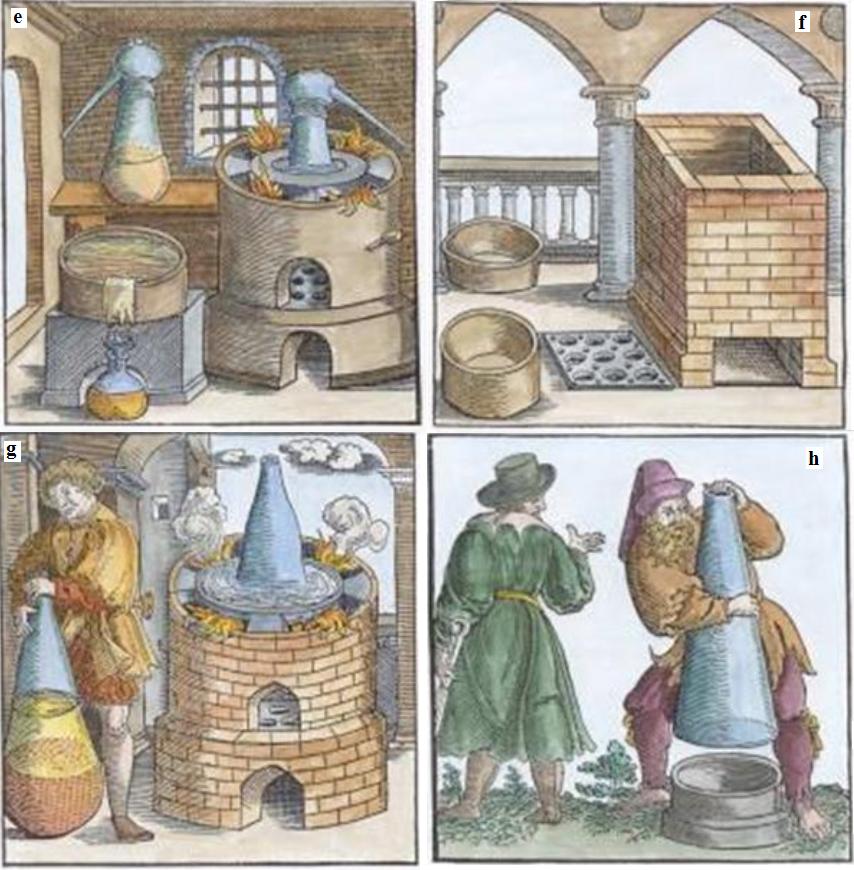
"8th century treatise on glass: Kitab al-Durra al-Maknuna (The Book of the Subconscious Pearl of Jabir ibn Hayyan (Geber in Latin) (c. 721–c. 815) On Coloured Drinking glass, On Lustre, On Gemstones And Pearls: Function 1: The Manufacture of Coloured Glass; Office 2: Lustre Glass; Function 3: The Colouring Of Gemstones, The Purifying and Making of Pearls and Other Useful Recipes; Office 4: Assessment of Kitab al-Durra al-Maknuna."
More Info: www.history-scientific discipline-engineering.com/articles/articles%2093.html
"Al-Tusi made his observations without telescopes or even glasses," says Djebbar, removing his own glasses and waving them theatrically in the air. "Even though the Arabs possessed the cognition to make lenses, they probably idea information technology was an idiotic idea. God made u.s.a. like this; why hang something on our noses to run into ameliorate?" he jokes, placing his glasses back on his olfactory organ with a flourish. His audience erupts into laughter as Djebbar, who was curator of "The Aureate Age of Arabic Sciences"—the Paris exhibition, which ran from October 2005 through March 2006 at the Arab World Plant—tries to placidity them downwardly."
Richard Covington*
*"Rediscovering Standard arabic Science" by Richard Covington
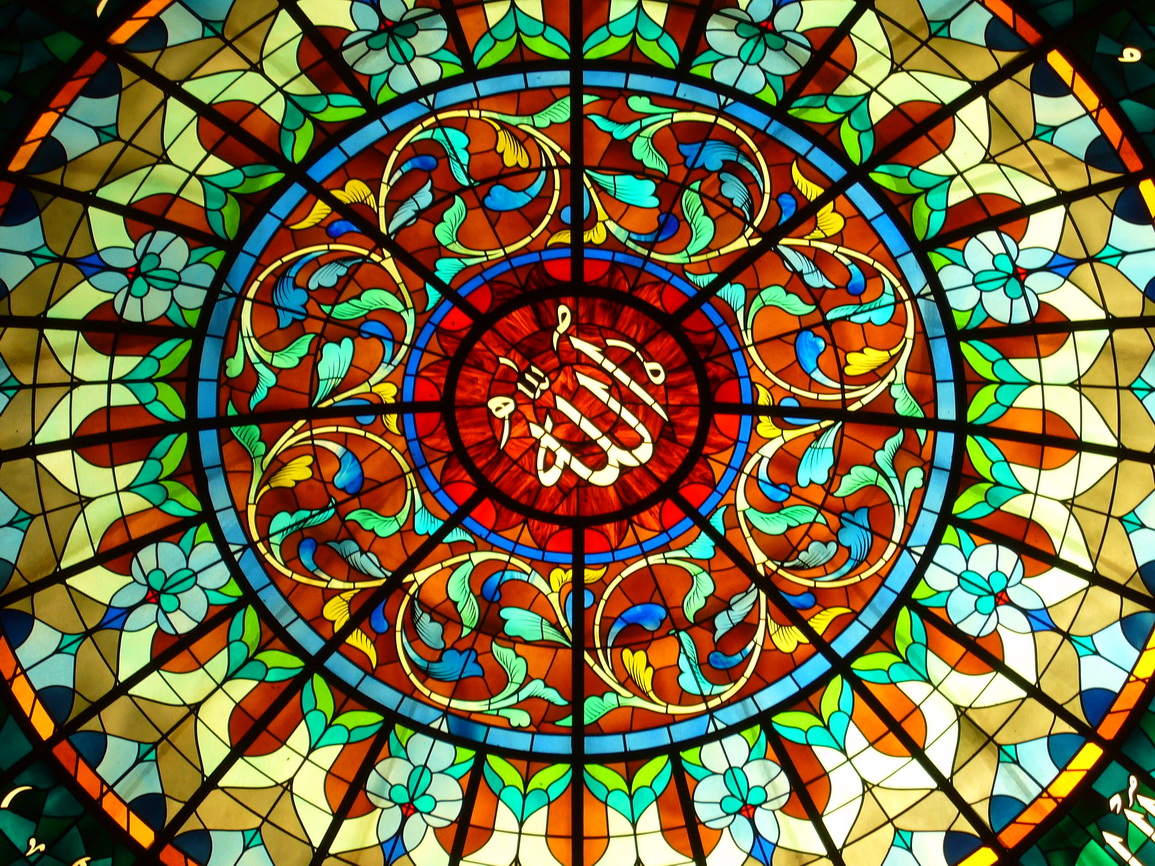
"… Of these are several minor military departments… such as the department of foundries for atomic number 26, copper, glass and others."
Al-Qalqashandi (d. 1418)*
* Al-Qalqashandi: Subhi al-A'sha; Cairo Ministry of Culture; part four; p. 188. " Al-Qalqashandi (d. 1418) in Subhi al-A'sha, when discussing authorities departments in Damascus during the period of 1171-1250″.
"A medieval Islamic glass vessel sold in London yesterday[02/04/2009] for ane.6 million pounds ($two.3 one thousand thousand), more than 20 times as much as it fetched less than a decade agone, when it was dismissed every bit a fake… The bucket is actually a glass finger bowl, intricately gilded and busy with colourful enamels, that dates from 14th century Egypt or Syria. It was made during the Mamluk dynasty that ruled the region from 1250 to 1517."*
*" 14th century bucket sells for £1.6m at Sotheby'southward" Apr three, 2009 / Anakin
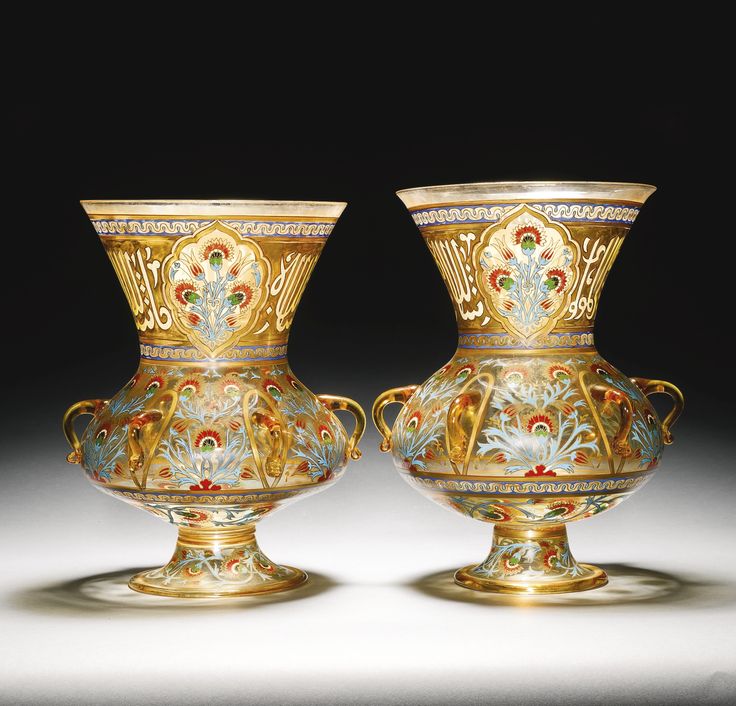
johnsonsqualoodding93.blogspot.com
Source: https://www.1001inventions.com/glass/
0 Response to "What Did You Think of Yesterday Desribe Islamic Art"
Post a Comment